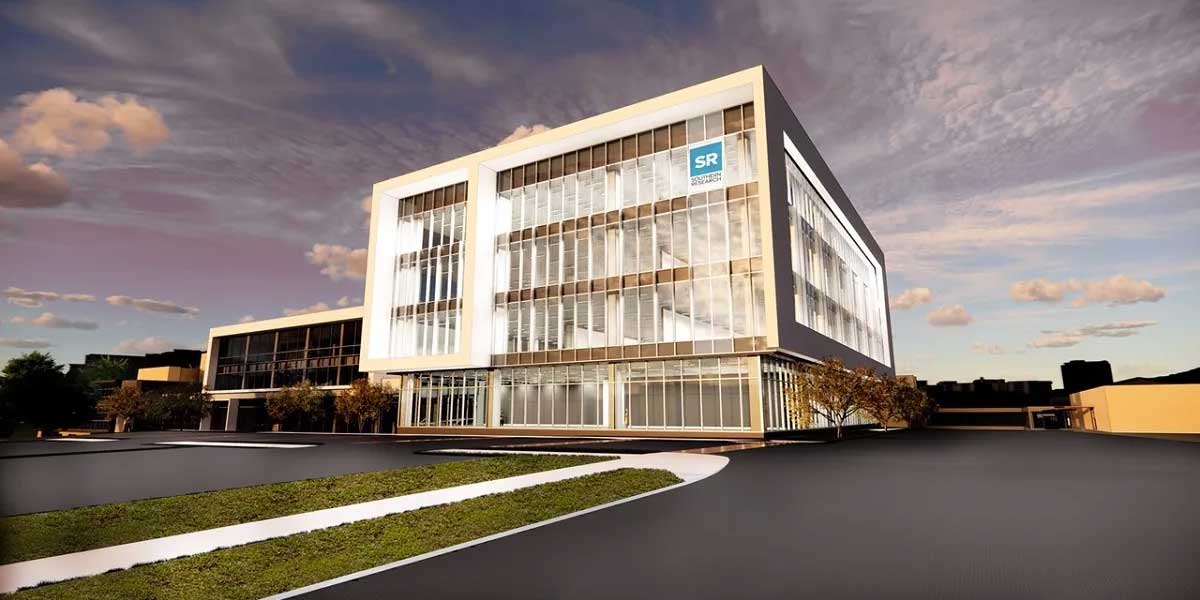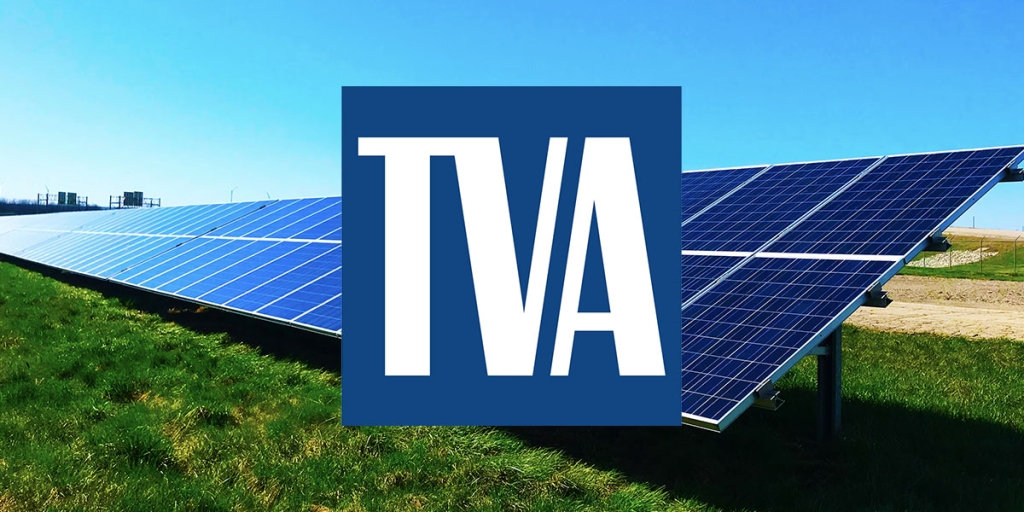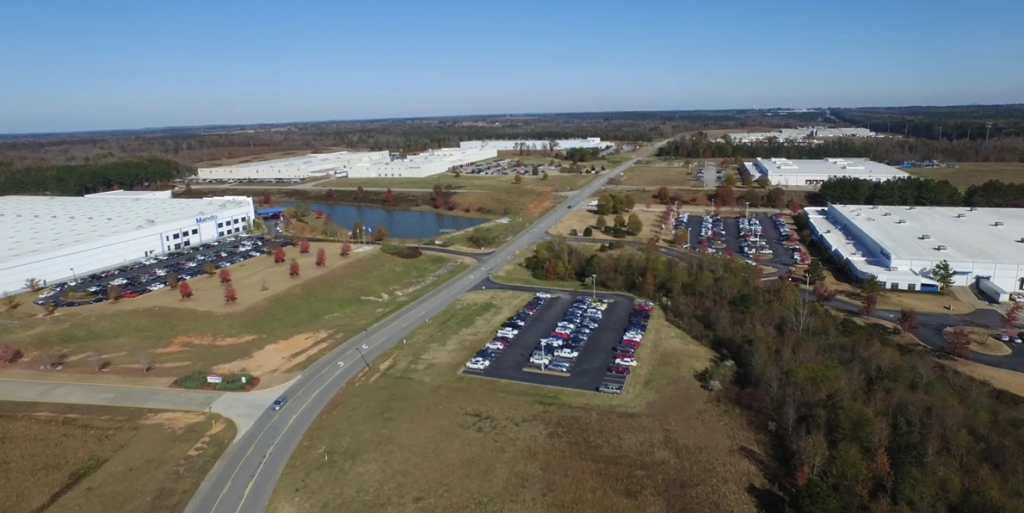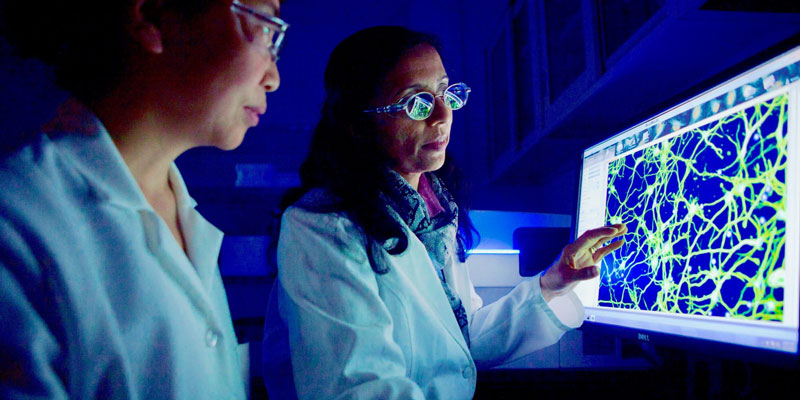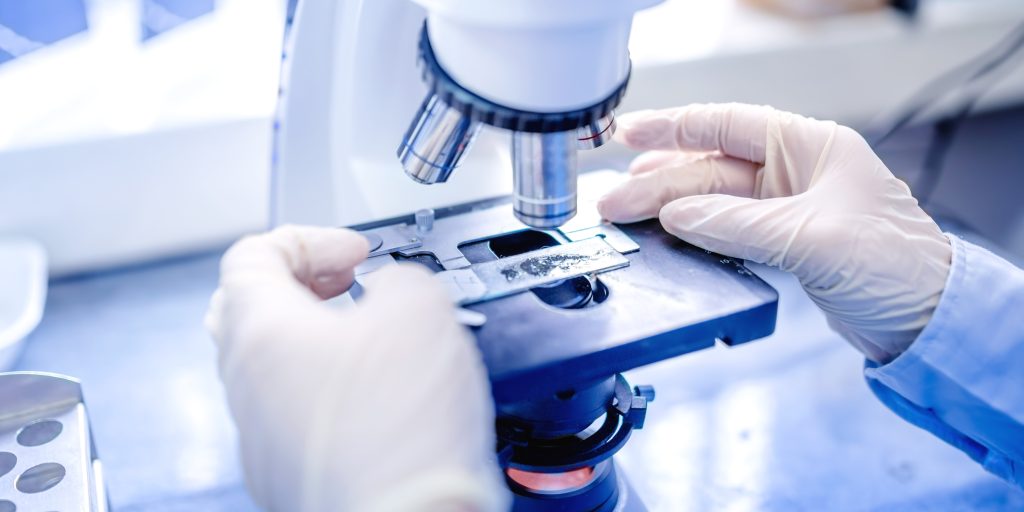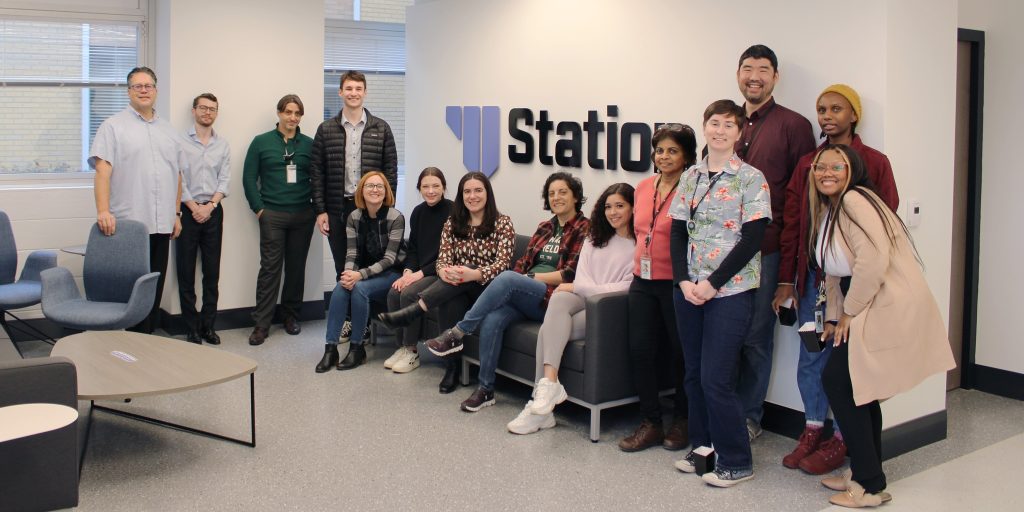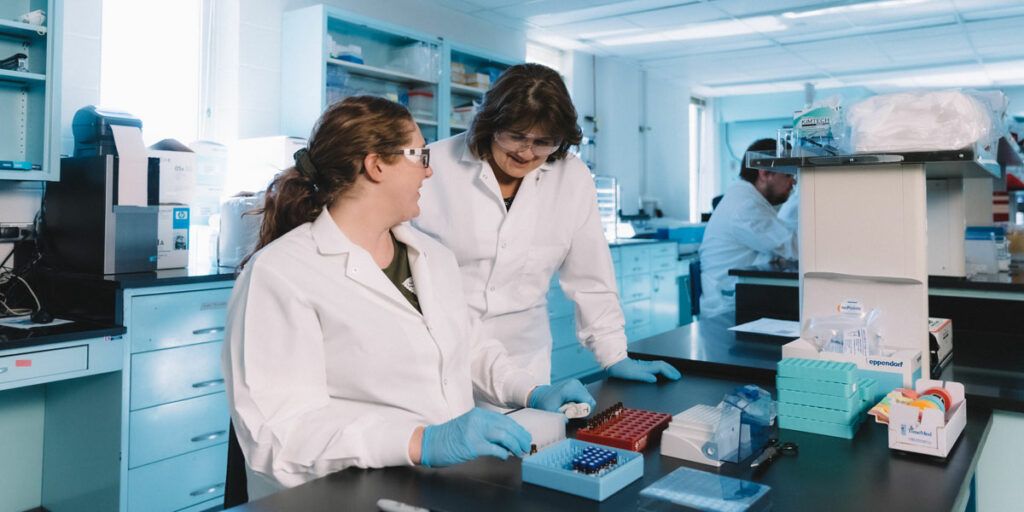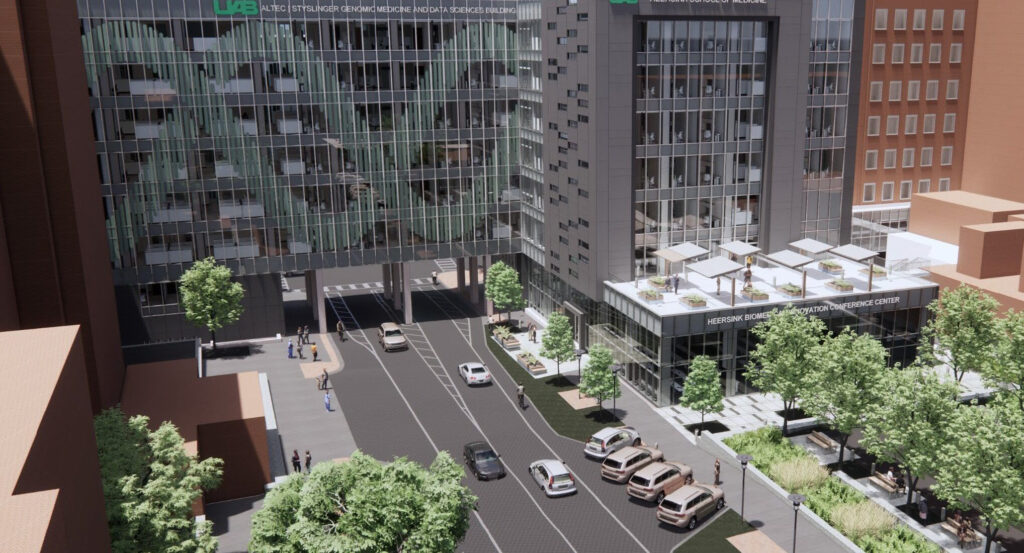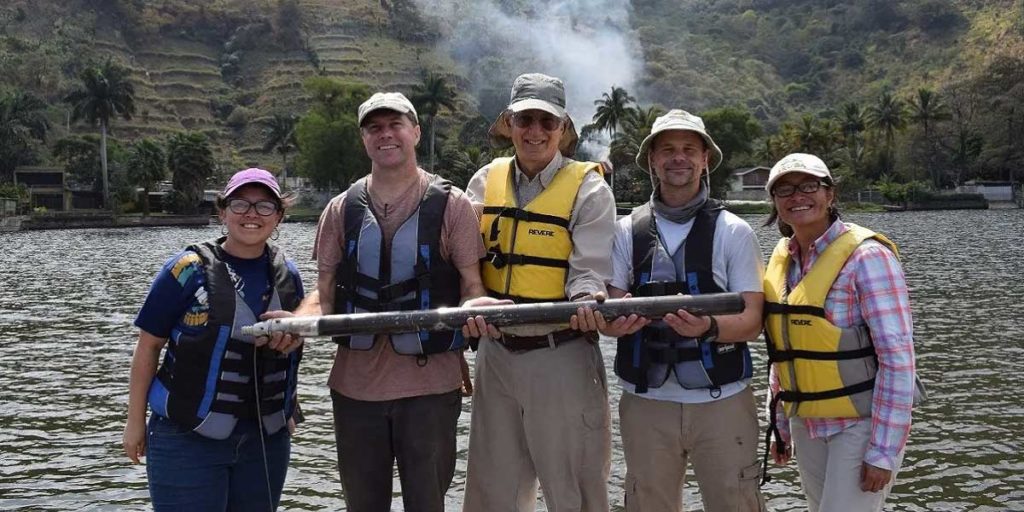Birmingham’s Southern Research is building an $84 million facility that will enhance its research capabilities, create nearly 550 jobs and double the organization’s economic impact to $300 million per year. The new building will be at the center of efforts to improve public health outcomes across Alabama, said Dr. Josh Carpenter, president and CEO of Southern Research.
“This is a bold investment that will benefit Birmingham and all of Alabama by creating economic development through innovation,” Carpenter said. “It’s a generational opportunity.”
Southern Research has been a fixture on Birmingham’s Southside for the better part of eight decades. An independent nonprofit, it has long been recognized among the nation’s leading research institutions, working in four key areas: drug development, drug discovery, energy and environment, and engineering.
That began in the fall of 1941 with an effort led by Tom Martin, then the president of Alabama Power, to establish a “research institute of the South.” Martin was a strong proponent of science and research as key to the South’s industrial growth and to keeping educated young people in the region.
Temporarily deferred by the onset of World War II, the Alabama Research Institute launched officially in December 1943, with Martin as chairman of the board. The following year, the name was changed to Southern Research Institute and the organization occupied its first facility on what remains its campus today.
Southern Research currently employs more than 400, generates revenues of more than $80 million annually and receives more funding from the National Institutes of Health (NIH) than any other nonacademic research center in Alabama. It is the only nonprofit research center in Alabama that is entirely self-sustaining, its activities funded through industry contracts, grants and revenue generated by intellectual properties.
Most recently, Southern Research has been a key player in addressing the pandemic. Its scientists have performed more than $30 million in COVID-19-related research, playing a critical role in refining remdesivir and other drug treatments against the virus. It is the state’s only high-throughput screening center for testing new compounds to treat diseases and variants, the only scientific organization that has contributed directly to vaccine development.
“We have a unique role,” said Carpenter. “From the start, this organization has been a hub for economic development and job creation in Birmingham.”
Along with the campus of UAB, Southern Research forms a 40-block area in which $750 million in biomedical research was conducted in 2021. That figure includes more than $300 million from the NIH, ranking Birmingham eighth nationally per capita in NIH funding.
Even so, Carpenter stressed, growth is both an opportunity and a necessity. UAB alone produces more than 400 biomedical sciences graduates each year, while Birmingham- and Tuscaloosa-area schools – UAB, the University of Alabama, Birmingham-Southern College, Samford University, the University of Montevallo, Miles College, Stillman College and Talladega College – produce a yearly combined total of nearly 800 graduates. Last year there were fewer than 100 local job openings for those graduates, meaning the vast majority go elsewhere to put their skills to work.
“Alabama is hemorrhaging human capital,” Carpenter said. “We’re losing homegrown talent in biomedical sciences. Changing that, and attracting talent from elsewhere, will open up tremendous opportunities for Birmingham and Alabama.”
Key to retaining and attracting talent is the quantity and quality of facilities available for research activities. With adequate private and public investment, Carpenter envisions the 40 square blocks occupied by SR and UAB as an emergent biotech corridor that will drive scientific advances and economic growth for a generation to come. The key component of that vision is the new building, which will have what Carpenter termed a “seismic” economic impact.
“Biotech is the future of Birmingham,” said Carpenter. “This building is the beachhead of that.”
Situated at Richard Arrington Jr. Boulevard and Ninth Avenue South – the former site of the recently demolished Quinlan Castle – the new facility will comprise 80,000 square feet on five levels. That includes 7,500 square feet of biosafety level 3 labs, doubling current space to accommodate the rapid increase in infectious disease research.
“We have had to turn down contracts for lack of adequate space,” Carpenter said. “Adding this facility will allow us to take on more work from government agencies and private industry that advance drugs and diagnostics to combat infectious diseases. We’ll do more research on potential infectious agents, meaning we’ll be contributing greatly to better preparedness for future pandemics.”
In addition, the new building will house a STEM education center, high-throughput screening facilities, structural biology and infectious diseases research labs, and a Center for Innovation and Commercialization. Its completion will open 60,000 feet of existing space for conversion to commercial wet lab space, which will be used to attract and incubate new biotech companies.
Crowning the building, literally and figuratively, will be a Center for Precision Population Health. The center will be dedicated to improving public health in Alabama, where problems such as diabetes, heart and lower respiratory diseases, and strokes have contributed increasingly to health problems and lowered life expectancies.
“Last year, Alabama had more deaths than births for the first time in its history,” Carpenter pointed out. “That has everything to do with public health. We want to marry our work with improving the health of Alabama’s population, integrating top scientists into a tremendous area of patient need.”
The cost of making the new building a reality is $84 million. Southern Research plans to invest $25 million of that total and hopes to raise most of the remainder through allocations from funds provided to state, county and local governments by the federal American Rescue Plan – $45 million from the state of Alabama and a combined $10 million from the city of Birmingham and Jefferson County, with the remaining $4 million from other sources.
Projections provided by Southern Research estimate the construction phase for the facility will create 1,120 construction jobs and more than $190 million in associated economic activity. Once complete, the facility will create nearly 550 permanent jobs and about $130 million per year in recurring economic activity.
“Southern Research has not built a new facility on its campus in 33 years and has never received any capital investment from the city of Birmingham, Jefferson County or the state of Alabama,” Carpenter said. “We hope they will agree that investing in pandemic preparedness and improved public health while generating tremendous economic impacts is a sound decision for a better future.”
(Courtesy of Alabama NewsCenter)




